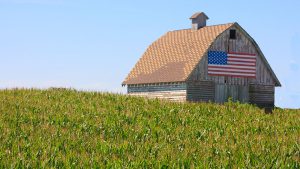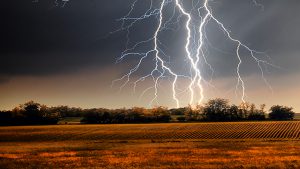Cropside: A good wheat crop
AGRONOMIC INFORMATION FROM ONTARIO'S CROP SPECIALISTS

THE 2017 SEASON had its challenges with a cool growing season pushing soybean harvest well into late October. This delay in soybean harvest, combined with some wet weather, resulted in two winter wheat crops in 2018, the early planted crop and the later planted crop. Unfortunately, the latter of the two often suffered and planting date had a lot to do with it.
Late planted fields had minimal tillers, poor root growth, and fields on heavy clay soils were more prone to heaving in the winter months. This left some growers dealing with thin and uneven stands making in-field management throughout the season a challenge (Figure 1). This was particularly evident when timing fungicide applications. So, when preparing for seeding this fall, it is important to focus on the details that will ultimately make a good wheat crop which means planting on time!
Planting your winter wheat crop in a timely fashion starts with selecting the right soybean variety. Yes that’s right, selecting the correct soybean variety. There is a tendency to select longer season varieties in Ontario which then pushes winter wheat planting to much later in the fall. When possible, select soybean varieties that can be harvested close to the optimum winter wheat planting date for your area (Figure 2). By selecting varieties that mature earlier, the soybean crop can be harvested earlier in the fall providing some cushion if soybean harvest is delayed or if the weather turns wet.
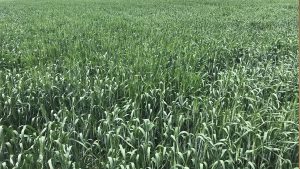
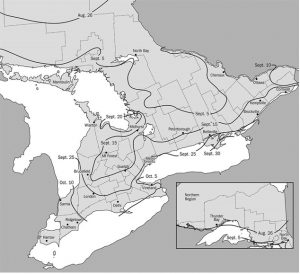
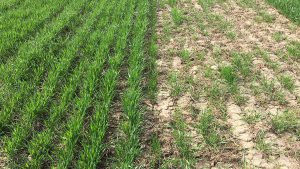
Next, plan to follow the combine! In the hustle and bustle of soybean harvest it can be really easy to push off winter wheat planting until the entire soybean crop is harvested. However, Ontario research has shown a 1.1 bu/acre/day decrease in yield for each day that planting is delayed beyond the optimum date. Whenever possible, try and follow the combine in the field with the drill and get that wheat planted. In order to successfully do this, ensure all soybean residue is evenly spread and that the drill can easily cut through the residue. Also double check that all planting equipment is in good working order well before you get to the field to avoid any further delays.
Lastly, be prepared to adjust! Mother Nature can sometimes throw a curveball at us during critical periods but when prepared, adjustments can easily be made. Adjusting your seeding depths and populations will help compensate for the less than ideal conditions that may occur at planting. Seed winter wheat at a depth of about one inch, any shallower and the crop becomes more vulnerable during the winter months (Figure 3). If the weather turns dry during planting, adjust the seeding depth so that the seed is being placed into moisture. Seeding rates should also be adjust if seeding is delayed beyond the optimum timing. Rates should be increased by 200,000 seeds/week to a maximum of 2.2 million seeds/acre. Higher seeding rates when planting is delayed will also assist with the reduced tillering that may occur before winter.
The fall can be a busy time with soybean harvest and winter wheat planting occurring simultaneously, but when it comes to winter wheat, time is money. So if we want a profitable wheat crop we need to pay attention to the details in the fall and plant a good wheat crop! •


















